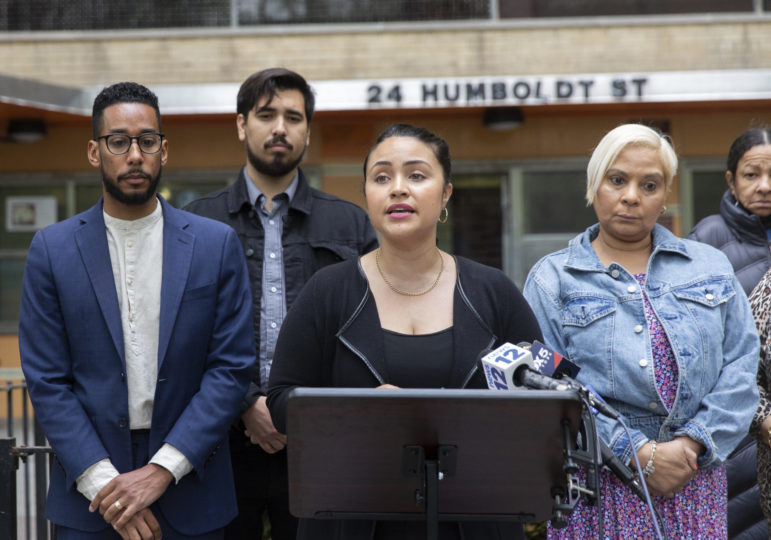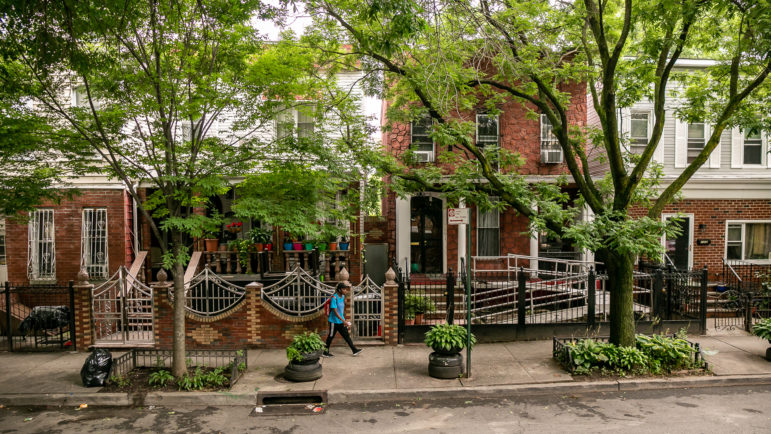In a document issued Monday, Councilmember Jennifer Gutiérrez laid out her priorities for any new development that requires changes to the zoning code in one of the city’s most intense real estate markets. Under the City Council’s informal tradition of member deference, local members have effective veto power over land use applications in their districts.

John McCarten/NYC Council Media Unit
Councilmember Jennifer Gutiérrez.
Developers looking to rezone rapidly gentrifying sections of Ridgewood, Bushwick and Williamsburg now have a rubric to follow if they want to earn the support of the local councilmember.
In a document issued Monday, Councilmember Jennifer Gutiérrez laid out her priorities for any new development that requires changes to the zoning code in one of the city’s most intense real estate markets. Gutiérrez’s District 34 includes parts of North Brooklyn and a sliver of the world’s fourth “coolest” neighborhood in Queens.
“Real estate speculation, rising rents, loss of rent-stabilized housing, and new developments with out-of-reach ‘affordable housing’ have left families that have called Bushwick, Williamsburg, and Ridgewood home for decades with no other option than to pack up and relocate,” Gutierrez wrote in the document published Friday.
The document, she said, “serves as a guide for any future rezoning and construction in District 34, grounded in an understanding that we will only consider equitable developments that strengthen the existing community.”
Gutiérrez is the latest councilmember to proactively lay out their vision or demands for future development proposals, which could be crucial for securing final approval. Under the City Council’s informal tradition of member deference, local members have effective veto power over land use applications in their districts. Councilmembers Julie Won, Tiffany Cabán and Kristin Richardson Jordan have each outlined similar rubrics, with varying degrees of specificity.
Gutiérrez’s rubric does not set specific benchmarks when it comes to the number or percentage of income-restricted apartments she needs to see before approving a project. Instead, she said any land use application should “maximize deeply affordable housing” for New Yorkers earning less than 50 percent of the area median income, or around $47,000 for an individual and $60,000 for a family of three. She also encouraged city-subsidized proposals where every unit is income-restricted, especially housing created or operated by “established, mission-driven” community-based organizations.
The neighborhoods in Gutierrez’s district have become shorthand for gentrification in recent years. Despite significant housing production, long-time residents of Williamsburg, Bushwick and increasingly Ridgewood—particularly Black and Latino New Yorkers—have been displaced as owners raise rents and attract weather tenants.
Just under 1,900 new housing units were built in District 34 between 2013 and 2021, according to an analysis of city housing data by the policy group New York Housing Conference. Districts immediately adjacent accounted for some of the most new housing in the city during that period.
Overall, more than 11,000 new housing units were built in Bushwick between 2006 and 2019 and per-unit home sale prices tripled from 2006 to 2021, according to a neighborhood analysis by the Furman Center.
Meanwhile median rents in Bushwick, calculated in 2021 dollar estimates, nearly doubled from $980 in 2000 to $1,790 while the percentage of apartments affordable to people earning 30, 80 and 120 percent of the area median income all dropped, Furman Center found.
About 55 percent of residents were considered rent-burdened—meaning they spend at least 30 percent of their income on housing—according to a 2018 community profile by the city’s Health Department. A quarter lived below the city’s poverty line. Rising rents combined with the COVID-19 pandemic and its economic fallout may have worsened those problems.
Gutiérrez said she will only support proposals for higher-density development on major corridors, like Myrtle Avenue and Broadway. Elsewhere, she said she is open to new development “that brings deeply affordable housing or affordable economic development space where it does not currently exist.”
Neighboring Ridgewood was recently ranked one of the globe’s trendiest neighborhoods by the magazine Time Out, exemplifying the area’s evolution into a desired destination with fast-rising rents.
Gutiérrez told City Limits her proposals build on the Bushwick Community Plan, a comprehensive blueprint for development and housing preservation crafted by former Councilmembers Antonio Reynoso and Rafael Espinal, Brooklyn Community Board 4 and various local organizations and residents starting in 2014.
“Communities should be planning the preservation of their communities and we as elected officials should elevate that,” Gutiérrez said. “I have three neighborhoods that I have to protect and I hear from constituents daily about how unaffordable it is.”
Developers have not yet submitted a land use application in District 34 during Gutierrez’s time in office. “But I have the information ready so before they even approach me they know where I stand,” she said.

Adi Talwar
Woodbine Street between Evergreen and Central avenues in Bushwick.
She also spelled out priorities for new development proposals in areas zoned for manufacturing and commercial use, citing the North Brooklyn Industry and Innovation Plan, which focuses on protecting existing industry and retaining jobs. She said she would not support residential development in Industrial Business Zones and will only back proposals with a “very clear industrial economic development rationale.”
Councilmembers’ broad land use rubrics have so far received backing from the city’s Department of City Planning (DCP).
An agency spokesperson said DCP Director Dan Garodnck was not available to comment on Gutierrez’s guidelines. But Garodnick, a former Manhattan councilmember, expressed his support for such proactive guidelines—so long as they are not too restrictive—during an interview with City Limits on the radio station WBAI in August.
Councilmembers “should certainly go to bat for community interests,” he said.
“We want to make sure to support them with that, but to look with an eye toward the citywide needs that we are facing and to balance out local concerns with the need for the creation of housing,” he added.









2 thoughts on “Building in Bushwick? Councilmember Lays Out Priorities for Rezonings”
The change of people depends on the leader. They must make the right and wise decisions.
I’m surprised that they don’t require a mandatory methadone clinic on the first floor.